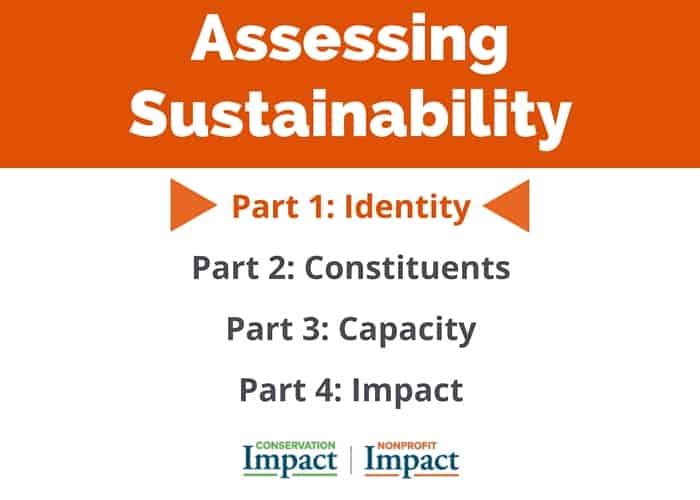
Assessing Sustainability: Part 1 – Identity
This post is part of a 4-part series on our Sustainability Self-Assessment tool. Read part 2 here, and part 3 here, and part 4 here.
As state and federal budget cuts loom and private fundraising continues to be impacted by the weak economy, more and more clients are asking us about sustainability. While this interest in sustainability is primarily driven by funding worries, it is important to remember that true, long-term sustainability is about much more than money.
A strong, sustainable organization has a clear, focused identity, a base of engaged constituents, and sufficient capacity (including funding) needed to get the work done. This more holistic understanding of sustainability informs ourIntegrated Strategy for Success and Sustainability.
If sustainability is top of mind in your organization, then our Sustainability Self-Assessment tool will help you think about your current situation and identify gaps that may hinder and strengths that may enhance your sustainability.
The Sustainability Self-Assessment uses questions developed by Conservation Impact and Nonprofit Impact and used in hundreds of planning and organizational development projects over the past 16 years. It is organized by the components of the Integrated Strategy. We’ll start today with the assessment questions related to identity. Parts 2 – 4 of this series will present assessment questions related to constituents, capacity, and brand.
Identity Defined
Identity is an organization’s description based on its purpose, focus, and core services or results. It defines the value proposition – what the organization provides to those it serves; why it is important.
Identity-Related Characteristics of Sustainability
An organization that is strong, potent, and sustainable:
- Possesses crystal clear vision of the difference it wants to make
- Has a discrete set of specific, measurable strategic goals that define what it will accomplish in the next few years
- Strategic goals align with the difference it wants to make
- Fills a distinct, unique niche
- Measures results (vs. activities)
- Goals and vision can be clearly, succinctly articulated, are universally understood, and are communicated consistently
Assessment Questions – Identity
- What difference does your organization want to make?
- What is the two or three sentence description of your organization?
- What position does your organization occupy? What is your distinct niche?
- What are the three or four outcomes or strategic goals you will achieve over the next few years?
- What are the measurable results of your activities and what data do you have to demonstrate results?
- What is the single, consistent message your organization communicates?
Instructions
Enlist a team of organization leaders to answer the assessment questions individually and compile the answers. Compare the answers to the list of characteristics below and discuss:
- What do our answers tell us about our identity?
- What are our strengths regarding the identity of our organization?
- What are our biggest gaps/ weaknesses?
- What are the one or two actions we will take to strengthen our identity, who is responsible for those actions, and what is the deadline?
Click here to read Assessing Sustainability: Part 2 – Constituents
Click here to read Assessing Sustainability: Part 3 – Capacity
Click here to read Assessing Sustainability: Part 4 – Impact

